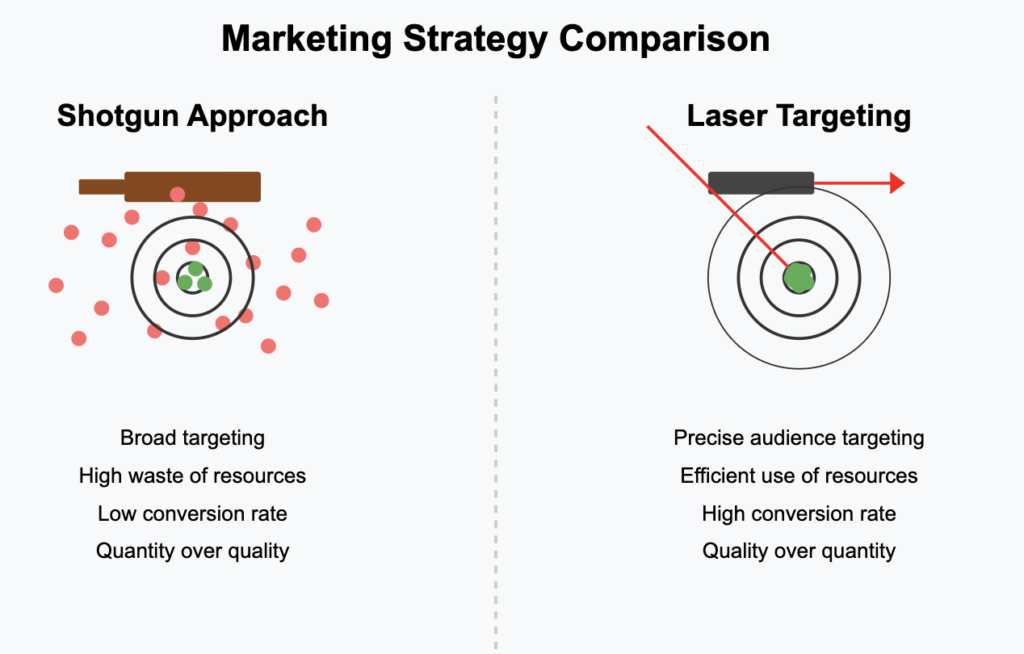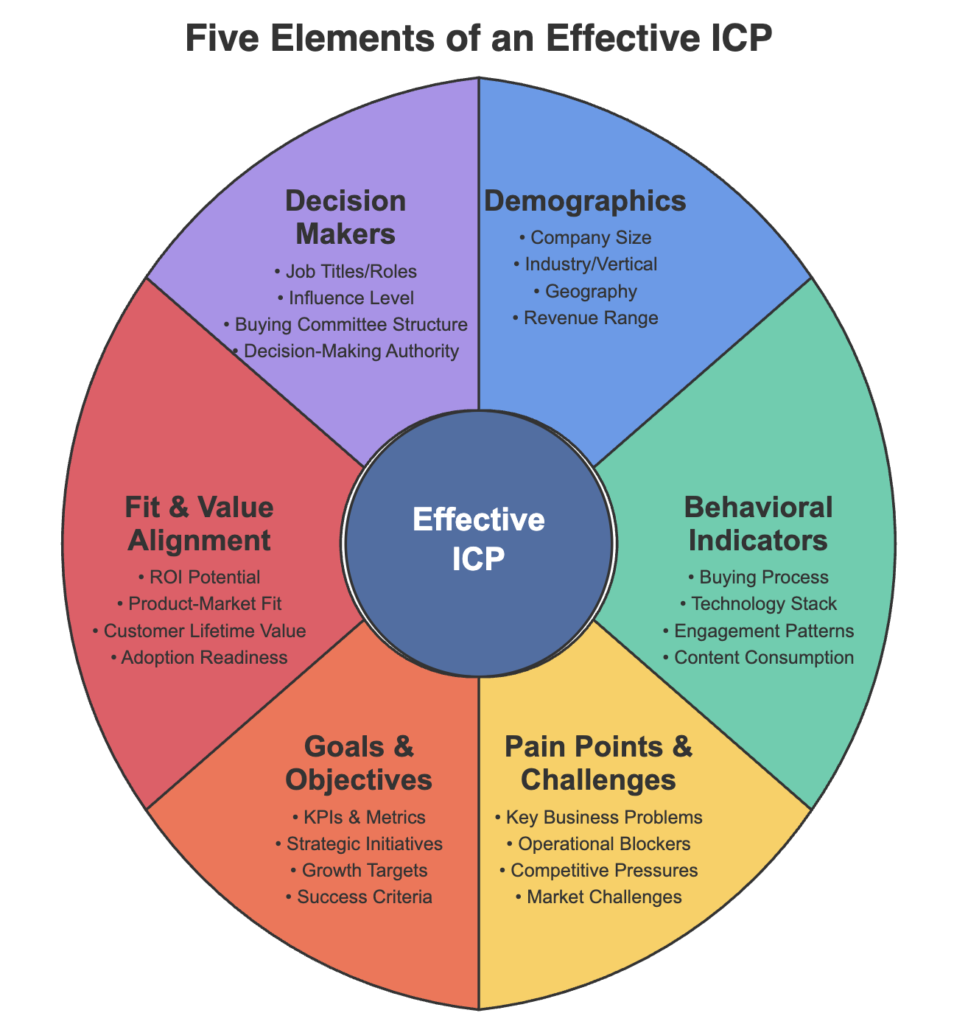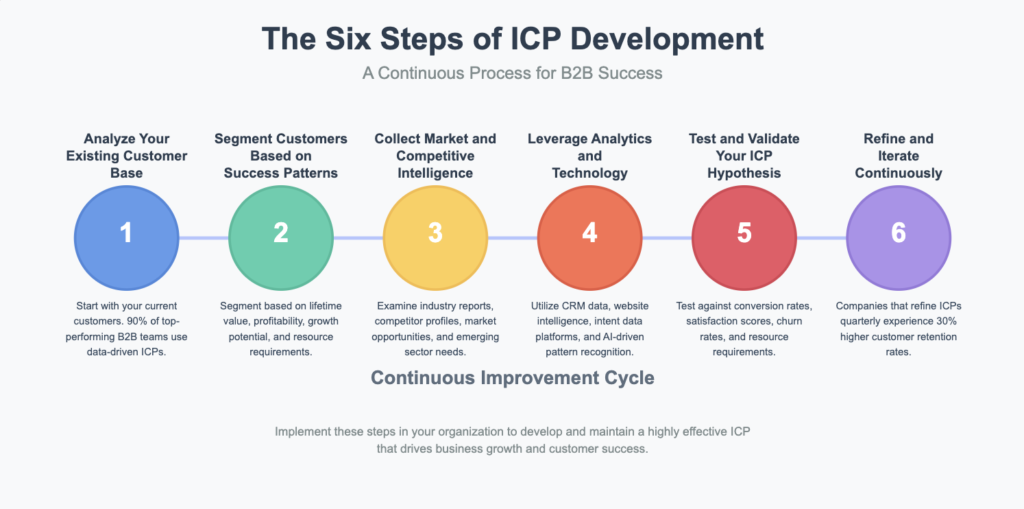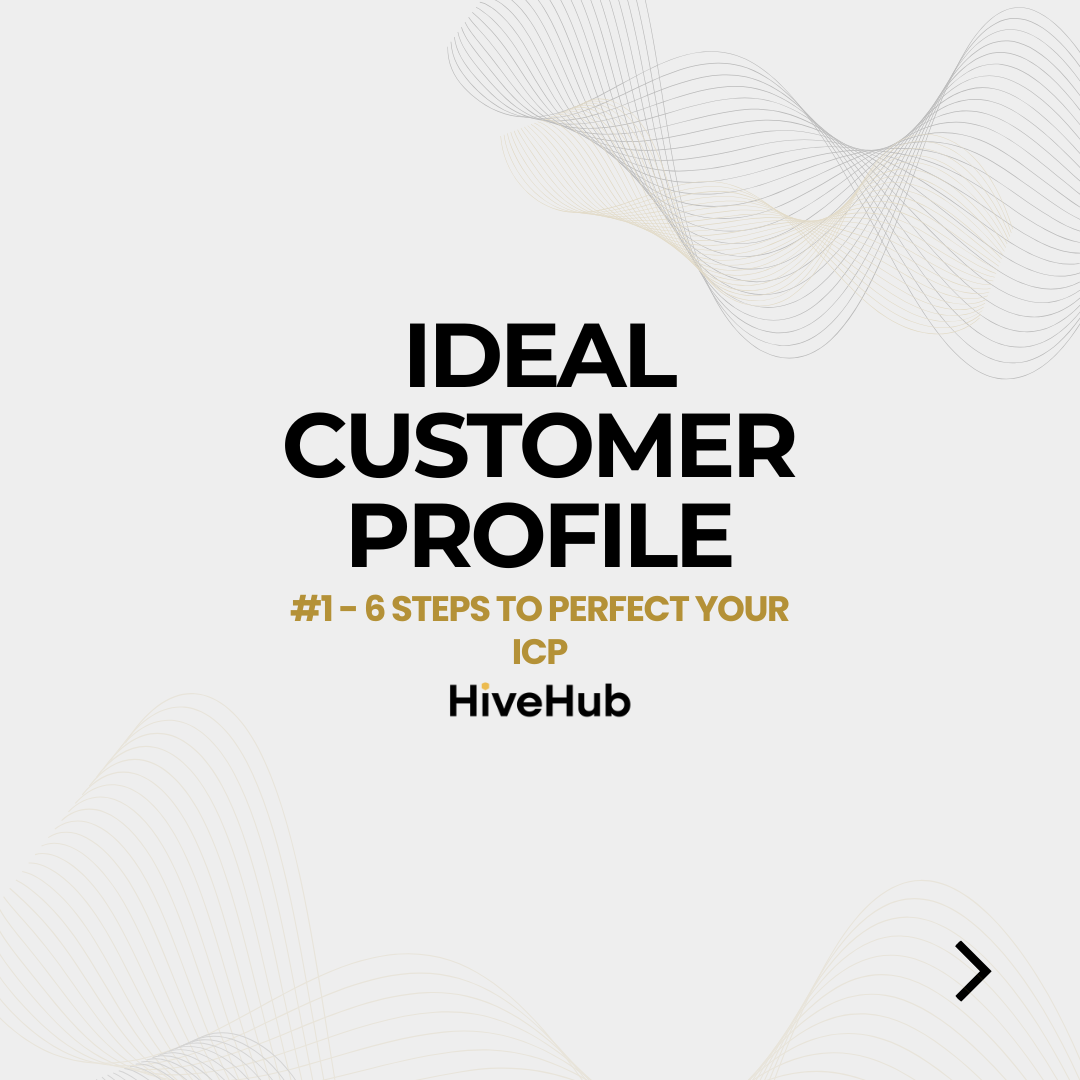Discover how to create an ideal customer profile for a more effective B2B targeting strategy and outreach segmentation. Our framework ensures you reach perfect-fit companies every time.
Reading Time: 6 Minutes
Why Most Companies Waste Time on the Wrong Prospects
Let me tell you something that might sting a little: if your sales team is struggling to convert leads, the problem might not be your product or your sales pitch. The real culprit? You’re probably targeting the wrong companies altogether.
Look, here’s a startling fact: sales teams waste approximately 50% of their time on unqualified prospects when they lack a clear Ideal Customer Profile (ICP). That’s half your resources essentially thrown out the window!
You know what amazes me? Despite this reality, so many businesses continue operating with vague notions of who their ideal customers actually are. They cast wide nets, hoping to catch whatever swims by, instead of using precision targeting to land exactly the right fish.
In this guide, I’ll walk you through a strategic framework for developing a precise, data-driven Ideal Customer Profile that will transform your outreach efforts from scattered shotgun blasts to laser-focused targeting. Because when you know exactly who you’re talking to, everything else falls into place.

What Exactly Is an Ideal Customer Profile?
Before we dive deep, let’s get crystal clear on what we’re talking about.
An Ideal Customer Profile (ICP) is a detailed description of the companies (not individual buyers) that would benefit most from your solution. These are the businesses that have the greatest strategic fit, highest potential for success, and the most significant lifetime value as customers.
Seriously, this is not the same as a buyer persona. While buyer personas focus on individual decision-makers within organizations (their job titles, challenges, goals), an ICP zooms out to look at entire companies based on firmographic, technographic, and behavioral characteristics.
The distinction matters tremendously. Having clarity about the types of companies you should target creates the foundation for everything else in your outreach strategy.
👉 According to Forrester Research, companies with well-defined ICPs achieve 68% higher account engagement. That’s not a small improvement. That’s game-changing.
The Essential Elements of an Effective ICP
Creating a comprehensive ICP means going beyond basic firmographics. Here’s what you need to include to make yours truly effective:

1. Firmographic Fundamentals
These are the basic identifying characteristics of your ideal companies:
- Industry or vertical
- Company size (employees)
- Annual revenue range
- Geographic location or market focus
- Growth stage or maturity
- Ownership structure (public, private, PE-backed)
Most companies stop here, but this is just the foundation. To create a truly powerful ICP, you need to go deeper.
2. Technographic Details
What technology ecosystem does your ideal customer operate within?
- Current tech stack or platforms
- Legacy systems they’re using
- Technology investment patterns
- Digital maturity level
- Software preferences (cloud, on-premise, hybrid)
3. Behavioral Insights
How do these organizations operate and make decisions?
- Buying processes and patterns
- Decision-making structure (centralized vs. distributed)
- Budget cycles and spending patterns
- Risk tolerance
- Innovation adoption tendencies
- Previous solution implementation history
4. Pain Points and Challenges
What specific problems exist that your solution addresses?
- Operational inefficiencies
- Competitive pressures
- Regulatory or compliance challenges
- Growth obstacles
- Customer retention issues
- Resource constraints
5. Intent and Engagement Signals
What behaviors indicate they’re ready for your solution?
- Content consumption patterns
- Website visits to specific pages
- Event participation
- Social media engagement
- Search behaviors
- Competitor comparison activities
The Systematic Process to Identify Your Ideal Prospects
Now that you understand the elements of a comprehensive ICP, let’s talk about how to actually build one. This isn’t guesswork—it’s a methodical process that requires data and analysis.
Step 1: Analyze Your Existing Customer Base
Start with the gold mine already at your disposal: your current customers.
👉 Gartner research shows that 90% of top-performing B2B sales and marketing teams use data-driven ICPs based primarily on existing customer analysis.
Step 2: Segment Customers Based on Success Patterns
Not all customers are created equal. Create distinct segments based on:
- Lifetime value
- Profitability
- Growth potential
- Resource requirements
- Alignment with your long-term strategy
Step 3: Collect Market and Competitive Intelligence
Expand your perspective by examining:
- Industry reports and trends
- Competitor customer profiles
- Market opportunity analysis
- Emerging sector needs
- Untapped market segments
Step 4: Leverage Analytics and Technology
Modern ICP development requires technological assistance:
- CRM data analysis
- Website visitor intelligence
- Intent data platforms
- Predictive analytics tools
- AI-driven pattern recognition
Step 5: Test and Validate Your ICP Hypothesis
Validate your ICP by testing it against:
- Sales conversion rates
- Customer satisfaction scores
- Churn rates
- Resource requirements for different customer segments
Step 6: Refine and Iterate Continuously
👉 Companies that refine their ICP quarterly experience 30% higher customer retention rates (SiriusDecisions).

From Theory to Practice: How Your ICP Transforms Outreach
Creating an ICP is meaningless if it sits in a digital drawer. The real value comes from implementation.
Precision Targeting for Marketing Campaigns
- Build highly targeted ads
- Create content that directly addresses your ICP’s pain points
- Optimize SEO for terms your ideal customers search
👉 McKinsey found that personalized outreach based on ICP-driven segmentation increases customer response rates by 202%.
Sales Enablement and Prioritization
- Score and prioritize inbound leads
- Identify high-potential accounts
- Quickly disqualify poor-fit prospects
Messaging and Value Proposition Alignment
- Craft messaging that resonates
- Position your solution in their industry context
- Address common objections before they arise
Key Takeaways: The ICP Development Framework
✔ A well-defined Ideal Customer Profile is the foundation of effective B2B outreach.
✔ Comprehensive ICPs include firmographic, technographic, behavioral, pain point, and intent signal elements.
✔ Developing your ICP requires data analysis, segmentation, competitive intelligence, analytics, testing, and continuous refinement.
✔ Your ICP should directly inform marketing campaigns, sales prioritization, and messaging.
✔ Companies with well-defined ICPs achieve 68% higher account engagement.
Turning Your ICP Into Outreach Success
You know what? Building a strong Ideal Customer Profile is not an academic exercise only. It’s about creating a practical tool that transforms how you reach potential customers.
With a data-driven ICP, you’ll stop wasting time on poor-fit prospects. You’ll craft messages that genuinely resonate. And you’ll focus your resources where they’ll generate the greatest return.
So take the time to do this right. Your future pipeline will thank you.
🔹 Visit our YouTube channel and check out our website to learn more.
